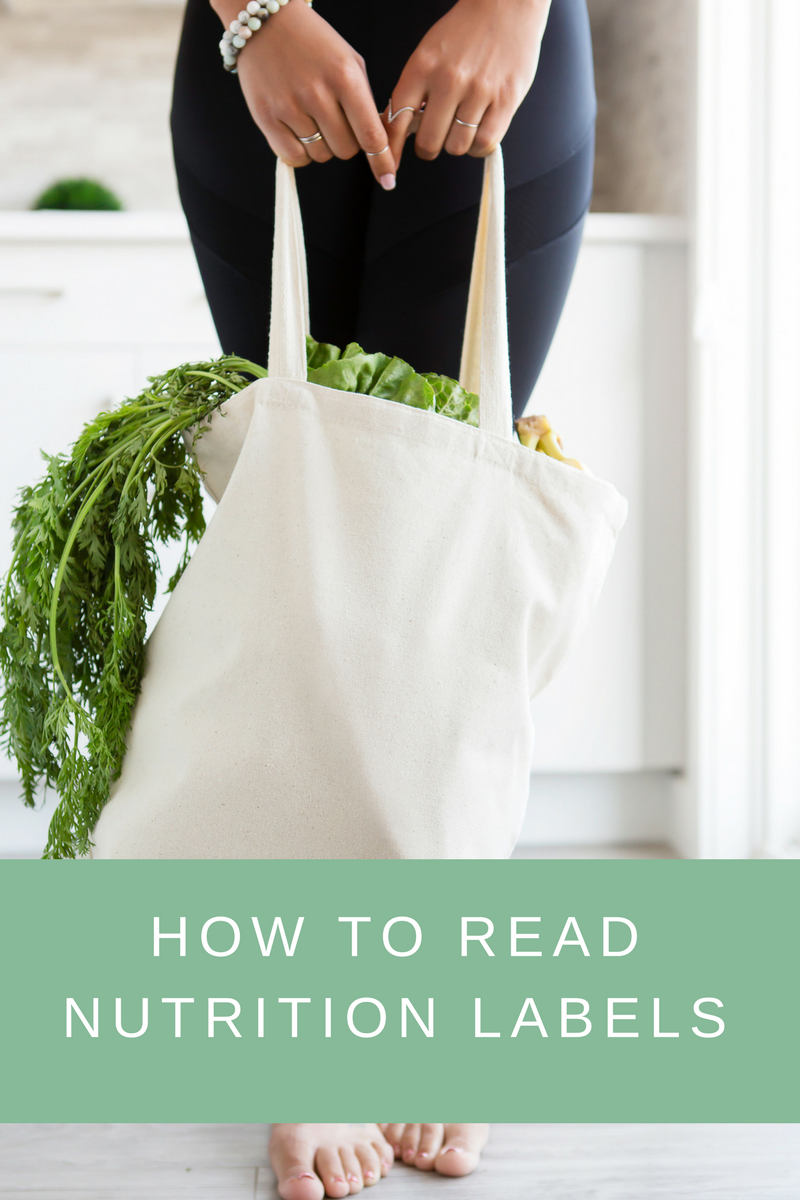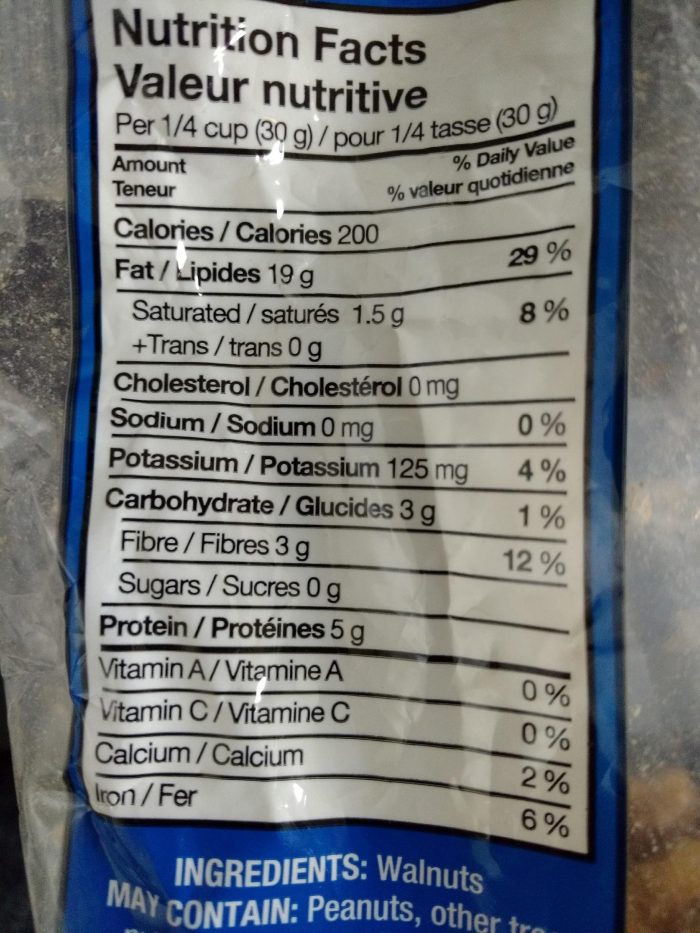
One of the first things that participants in my diabetes prevention classes learn is how to read nutrition labels. While a lot more goes into healthy eating than just numbers, understanding and reading nutrition labels can be an eye-opening experience!
Here are the first four steps you should take when checking out the label:
Step 1: Serving Size
The absolute most important part of the label is to note the serving size. Manufacturers often strategically choose the serving size to make the rest of the numbers look good. Small serving = small calories/fat/carbs. So, it’s tricky. Even I have been shocked to look at a snack bag, for example, and realize that according to the label it should be three servings!
All the information in the label rests on the amount chosen as the serving size. And, since every manufacturer chooses their own, it’s often difficult to compare two products.
Let’s use an example – plain, unsalted walnuts from Costco.

As you can see, right under the Nutrition Facts header is the serving size. That is a ¼ cup or 30 g. This means that all the numbers underneath it are based on this amount.
FUN EXPERIMENT: Try using a measuring cup to see exactly how much of a certain food equals one serving. You may be surprised at how small it is (imagine a ¼ cup of walnuts).
Step 2: % Daily Value
The % Daily Value (%DV) is based on the recommended daily amount of each nutrient the average adult needs. Ideally, you will get 100% DV for each nutrient every day. This is added up based on all of the foods and drinks you have throughout the day.
NOTE: Since children are smaller and have different nutritional needs if a type of food is intended solely for children under the age of 4, then those foods use a child’s average nutrition needs for the %DV.
The %DV is a guideline, not a rigid rule.
You don’t need to add all of your %DV up for everything you eat all day. Instead, think of anything 5% or less to be a little; and, anything 15% or more to be a lot.
NOTE: Not every nutrient has a %DV. You can see it’s missing for things like cholesterol, sugar, and protein. This is because there isn’t an agreed “official” %DV for that nutrient.
Step 3: Middle of the table (e.g. Calories, fat, cholesterol, sodium, potassium, carbohydrates, and protein)
Calories are pretty straight forward. Here, a ¼ cup (30 g) of walnuts has 200 calories.
Fat is bolded for a reason. That 19 g of fat (29% DV) is total fat. That includes the non-bolded items underneath it. Here, 19 g of total fat includes 1.5 g saturated fat, (19 g – 1.5 g = 17.5 g) unsaturated fat, and 0 g trans fat. (Yes, unsaturated fats including mono- and poly-unsaturated are not on the label, so you need to do a quick subtraction).
Cholesterol, sodium, and potassium are all measured in mg. Ideally, aim for around 100% of potassium and sodium each day. It’s easy to overdo sodium, especially if you grab pre-made, restaurant foods, or snacks. Keep an eye on this number if sodium can be a problem for you (e.g. if your doctor mentioned it, if you have high blood pressure or kidney problems, etc.).
Carbohydrate, like fat, is bolded because it is total carbohydrates. It includes the non-bolded items underneath it like fiber, sugar, and starch (not shown). Here, 30 g of walnuts contain 3 g of carbohydrates; that 3 g are all fiber. There is no sugar or starch. And as you can see, 3 g of fiber is 12% of your daily value for fiber.
Proteins, like calories, are pretty straight forward as well. Here, a ¼ cup (30 g) of walnuts contains 5 g of protein.
Step 4: Bottom of the table (e.g. vitamins & minerals)
The vitamins and minerals listed at the bottom of the table are also straightforward.
Manufacturers can add other vitamins and minerals to the bottom of their Nutrition Facts table (this is optional). And you’ll notice that some foods contain a lot more vitamins and minerals than others do.
Conclusion
I hope this crash course in nutrition labels was helpful. While it is obviously better to choose items that don’t have labels (fruit, vegetables, etc.–anything unpackaged) this is good information to know!
For further reading check out this post from the FDA: https://www.fda.gov/Food/LabelingNutrition/ucm274593.htm
Do you have questions about it? Have you ever been surprised at what you’ve seen on a label? If so, leave me a comment below.
Recipe (walnuts): Delicious and Super-Easy Walnut Snack
Serves 1
8 walnut halves
4 dates, pitted
Instructions
Make a “date sandwich” by squeezing each date between two walnut halves.
Serve & enjoy!
Tip: Try with pecans instead.



What's on your mind?